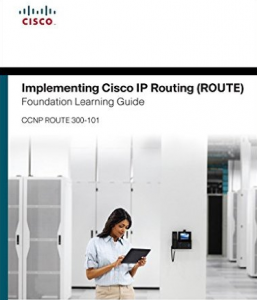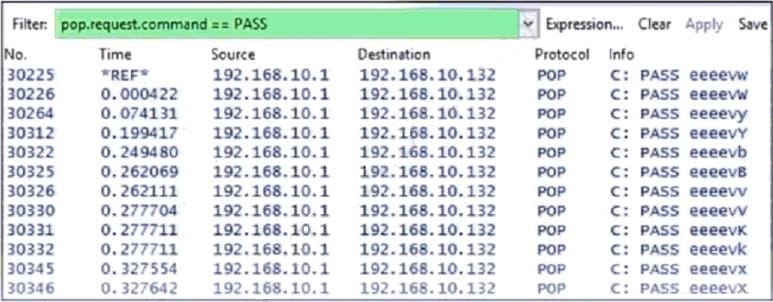Pass Cisco 300-101 IT Exam provides you best solution for your https://www.leads4pass.com/300-101.html certification exam. Various exams of branded certifications are becoming more and more valued and demanding exams in today’s IT industry. These exams are not that easy to crack. We don’t just say it. Here is how it goes. Our experts are working day and night to make the study material more and more elaborative and simpler so that you are able to understand the concepts much easier than ever before. Qualifying as a 300-101 CCDP Immersive Solutions certification is not an easy thing to achieve.

QUESTION 1
A network administrator uses IP SLA to measure UDP performance and notices that packets on one router have a higher one-way delay compared to the opposite 300-101 vce direction. Which UDP characteristic does this scenario describe?
A. latency
B. starvation
C. connectionless communication
D. nonsequencing unordered packets
E. jitter
Correct Answer: A Explanation
Explanation: Cisco IOS IP SLAs provides a proactive 300-101 notification feature with an SNMP trap. Each measurement operation can monitor against a pre-set performance threshold. Cisco IOS IP SLAs generates an SNMP trap to alert management applications if this threshold is crossed. Several SNMP traps are available: round trip time, average jitter, one-way latency, jitter, packet loss, MOS, and connectivity tests.
Here is a partial sample output from the IP SLA statistics that can be seen: router#show ip sla statistics 300-101 exam 1 Round Trip Time (RTT) for Index 55 Latest RTT: 1 ms Latest operation start time: *23:43:31.845 UTC Thu Feb 3 2005 Latest operation return code: OK RTT Values: Number Of RTT: 10 RTT Min/Avg/Max: 1/1/1 milliseconds Latency one-way time: Number of Latency one-way Samples: 0 Source to Destination Latency one way Min/Avg/Max: 0/0/0 milliseconds Destination to Source Latency one way Min/Avg/Max: 0/0/0 milliseconds
QUESTION 2
Under which 300-101 condition does UDP dominance occur?
A. when TCP traffic is in the same class as UDP
B. when UDP flows are assigned a lower priority queue
C. when WRED is enabled
D. when ACLs are in place to block TCP traffic
Correct Answer: A Explanation
Explanation: Mixing TCP with UDP It is a general best practice to https://www.leads4pass.com/300-101.html dumps not mix TCP-based traffic with UDP-based traffic (especially Streaming-Video) within a single service-provider class because of the behaviors of these protocols during periods of congestion. Specifically, TCP transmitters throttle back flows when drops are detected. Although some UDP applications have application-level windowing, flow control, and retransmission capabilities, most UDP transmitters are completely oblivious to drops and, thus, never lower transmission rates because of dropping.
When TCP flows are combined with UDP flows within a single service-provider class and the class experiences congestion, TCP flows continually lower their transmission rates, potentially 300-101 giving up their bandwidth to UDP flows that are oblivious to drops. This effect is called TCP starvation/UDP dominance. TCP starvation/UDP dominance likely occurs if (TCP-based) Mission-Critical Data is assigned to the same service-provider class as (UDP-based) Streaming-Video and the class experiences sustained congestion. Even if WRED is enabled on the service-provider class, the same behavior would be observed because WRED (for the most part) manages congestion only on TCP-based flows.
Reference: http://www.cisco.com/c/en/us/training-events/training-certifications/exams/current-list/route2.html
Read more: http://brain2dumps.com/pass-ensure-comptia/

